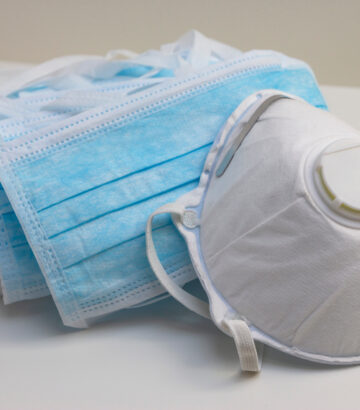Importance of Systemic Public Health Measures to Mitigate Airborne Infections
Prepared for Dr. Jonathan B. Perlin, President and Chief Executive Officer, The Joint Commission by the World Health Network
December 26, 2024
Throughout history, foundational public health measures—such as hygiene protocols, vaccination campaigns, and universal blood safety standards—emerged in response to widespread morbidity and mortality. While these measures faced initial resistance, they have since become cornerstones of modern healthcare. The SARS-CoV-2 pandemic underscores the urgent need to address aerosolized airborne infections, particularly in healthcare settings, where high-risk individuals are concentrated and healthcare workers face repeated exposure.
Evidence for Airborne Infection Mitigation
A recent study published in JAMA Network Open (2024) [1,2] provides compelling evidence of the impact of airborne transmission control. The study found that halting universal masking and SARS-CoV-2 testing in hospitals led to a 25% increase in hospital-onset respiratory viral infections compared to community infections. Reinstating masking reduced these infections by 33%. Moreover, the study reported a death rate of 8 out of 100 hospitalized patients who acquired SARS-CoV-2. These findings are consistent with data from Australian hospitals, where nearly 1 in 10 patients who contracted COVID-19 in hospital settings during 2022–2023 died [3].
Despite these statistics, federal guidelines for preventing airborne pathogen transmission in healthcare facilities remain outdated. The CDC’s last update, issued in 2007, was based on an understanding of large droplet transmission, which fails to account for aerosolized particles that can remain airborne and disperse widely. This outdated framework inadequately addresses pathogens like SARS-CoV-2, tuberculosis, and measles, which spread primarily via aerosols.
Recommendations for Systemic Interventions
To address these challenges, healthcare systems must adopt systemic, evidence-based interventions, including:
- Universal Respirator Use: Healthcare workers should universally wear N95 respirators (or higher-grade protection) to reduce in-house transmission of aerosolized pathogens. Patients and visitors should also be required to use respirators where feasible. Surgical and cloth masks are insufficient for preventing aerosol transmission.
- Improved Ventilation Standards: Indoor air quality measures, including HEPA filtration and increased air exchange rates, must be implemented and proactively maintained. These measures reduce the spread of airborne pathogens without relying solely on individual behavior.
- Strategic Testing: Admission testing and visitor screening should adapt to community prevalence but remain integral to infection prevention for COVID-19 and other airborne diseases.
A JAMA Network Open editorial from November 2023 emphasized selective measures like masking and testing during high-transmission periods [4]. While intended to be pragmatic, this perspective overlooks the year-round risks posed by COVID-19, asymptomatic and pre-symptomatic transmission, long-term morbidities such as Long COVID, the evidence that this virus can cause a systemic vascular and inflammatory disease, and the need for comprehensive systemic measures like ventilation. Several response letters to this editorial critique its limited scope [5]. To safeguard healthcare environments, it is imperative to transition from reactive source-control policies to proactive systemic public health measures.
Call to Action
Addressing airborne infections with the same rigor applied to universal blood safety protocols will protect vulnerable populations, reduce morbidity and mortality, and safeguard healthcare workers. We urge key agencies and organizations to update infection control guidelines to reflect modern evidence on aerosol transmission and ensure healthcare facilities are equipped to meet these challenges effectively.
References
- Pak TR, Chen T, Kanjilal S, McKenna CS, Rhee C, Klompas M. Testing and Masking Policies and Hospital-Onset Respiratory Viral Infections. JAMA Netw Open. 2024;7(11):e2448063. https://doi.org/10.1001/jamanetworkopen.2024.48063
- Robertson R. Want to Limit Respiratory Virus Infections? Mask and Test in Hospitals. MedPage Today. November 27, 2024. Retrieved from https://www.medpagetoday.com/infectiousdisease/rsv/113155
- Gleeson H. Hundreds of patients died after catching COVID in Victorian hospitals, new data shows. ABC News. May 5, 2024. Retrieved from https://www.abc.net.au/news/2024-05-06/hundreds-died-catching-covid-victoria-hospitals-testing-masking/103784896
- Klompas M, Baker MA, Rhee C. On the Use of Selective Infection Control Measures in HighTransmission Periods. JAMA Netw Open. November 2023. https://jamanetwork.com/journals/jamanetworkopen/fullarticle/2811653
- Kavanagh J, Gordon J, Strasser M, Martinot M. Response Letters. JAMA Netw Open. November 2023. https://jamanetwork.com/journals/jamanetworkopen/fullarticle/2811653











